Earlier this year I invited a few friends over for a ‘sweater party’ - I asked them each to bring an old / damaged / unworn sweater that I could repair or remake into something new. I’d recently learned how to machine knit, and had just purchased my own knitting machine off of eBay. I figured this was a good way to practice.
After completing the first sweater, and a few failed attempts at making a second, I took a little pause to conceptualize and create a small collection of ‘summer tops’. Summer was coming; it wasn’t ‘sweater weather’ anymore. But now, post pop-up, I had time to revisit these sweaters and use them as an opportunity to iterate on my pattern.
Design
When I picked this project back up in early August, I thought I’d use it as an opportunity to crystalize an ‘official’ version of the drop shoulder pattern I’d developed (inspired by this hand knitting pattern by Spektakelstrik). I measured all three of my completed sweaters as reference, and documented the measurements (& slight inconsistencies). I drafted a new clean blueprint on graph paper, averaging out the observed measurements. On a whim and without much consideration, I added an inch of height to the upper back and upper front of the pattern, thinking it would allow for a ‘scoop-ier’ neckline. I’d come to find that this ‘little tweak’ was actually a big mistake.
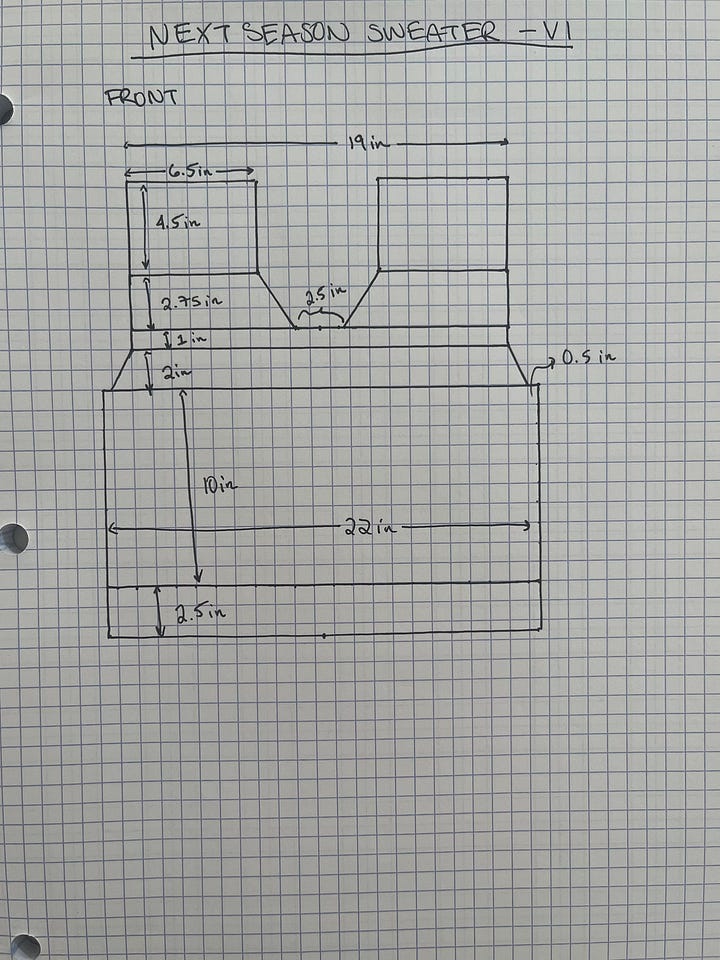
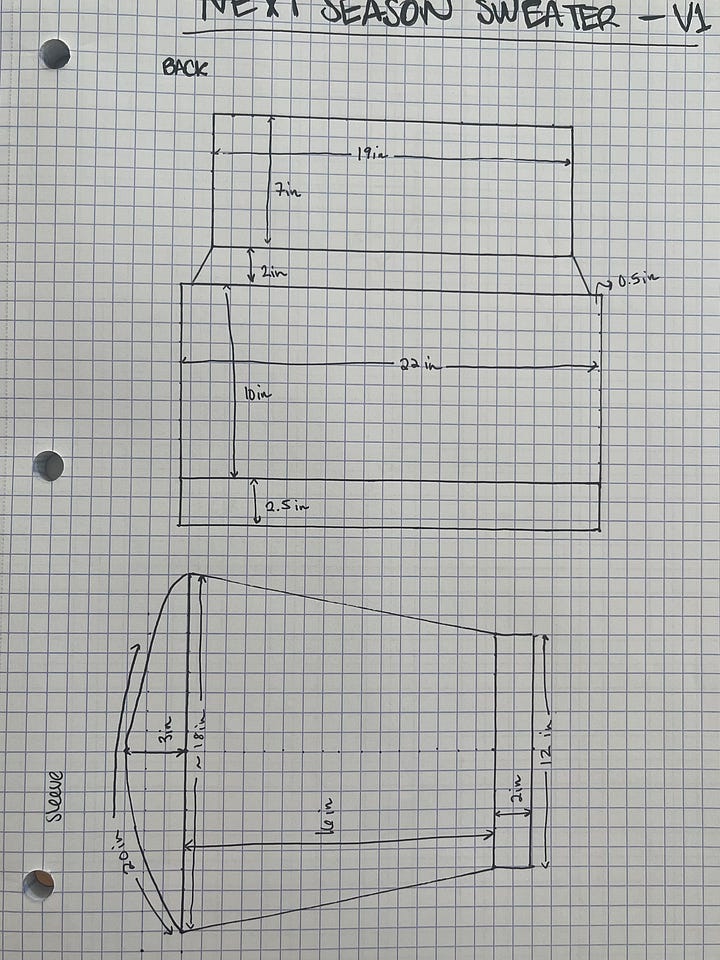
Materials
My friend Sophie’s stained, cream-colored sweater was a perfect candidate for remanufacturing. Out of the color options I provided, she requested a ‘muted mono (original sweater color + neutrals)’ color way but ultimately gave me carte blanche to make whatever I thought would look good. I wanted to stick to the brief, and so I pulled together ‘waste’ and scrap yarn in neutral tones. I unravelled these two damaged Eileen Fisher sweaters, one light gray, and one camel/beige, both with a nice texture, to incorporate into the piece.
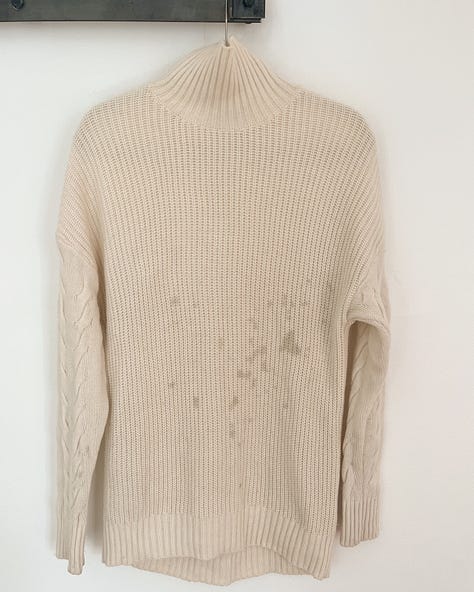
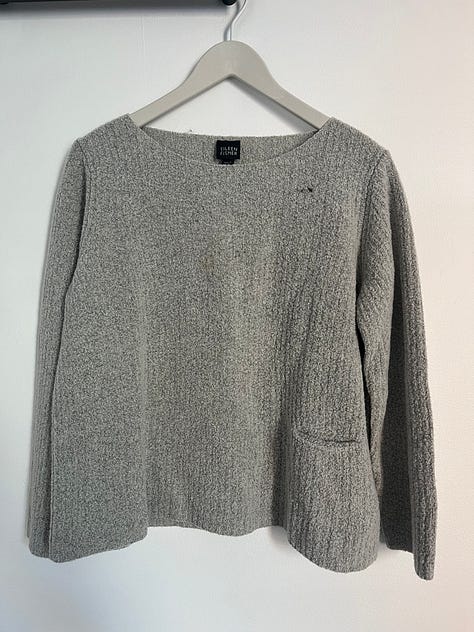
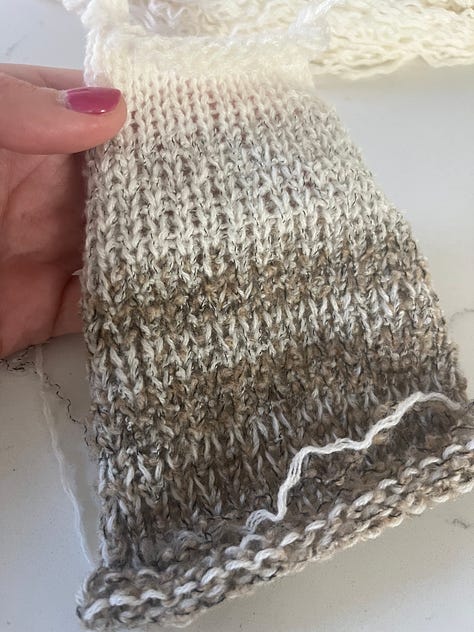
Manufacturing
Knitting started off well. The ribbed hem was perfectly tight and neat, something I’d struggled with previously. After attempting to knit with this yarn back in May, I realized that the cream-colored yarn held together with the grey was an ok thickness for regular knitting on my ‘bulky’ gauge machine, but was too thin to produce good ribbing. So this time around I decided to double up the yarn and knit an overall chunkier sweater.

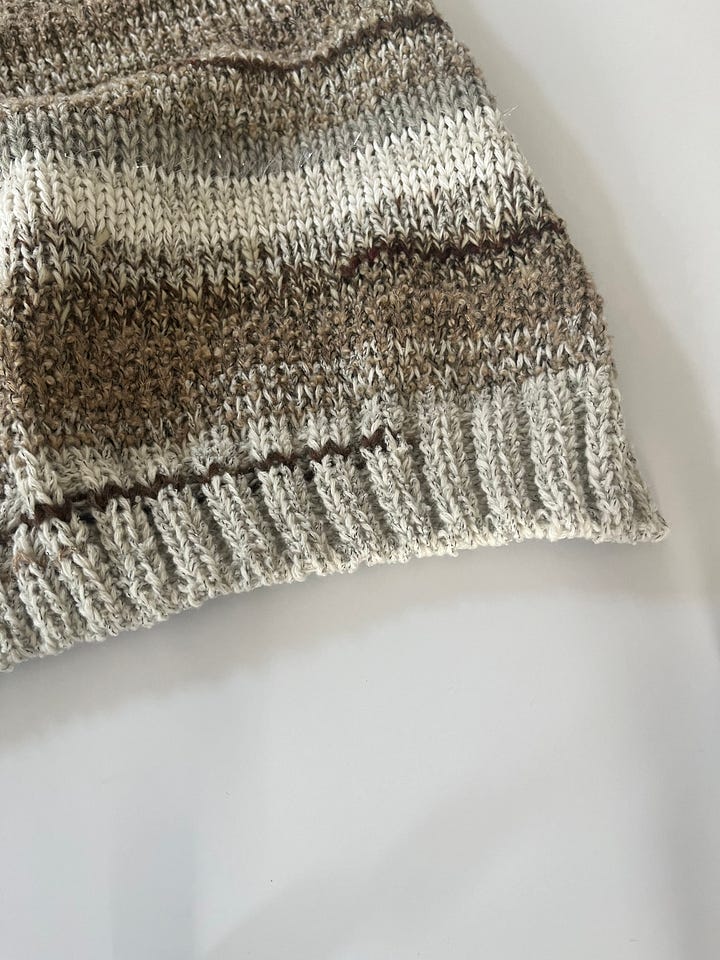
I also tried a new technique for attaching the collar (based on a video I saw on Instagram), which created a neat, professional-looking finish. It finally felt like I could reliably turn out a sweater of really good quality.
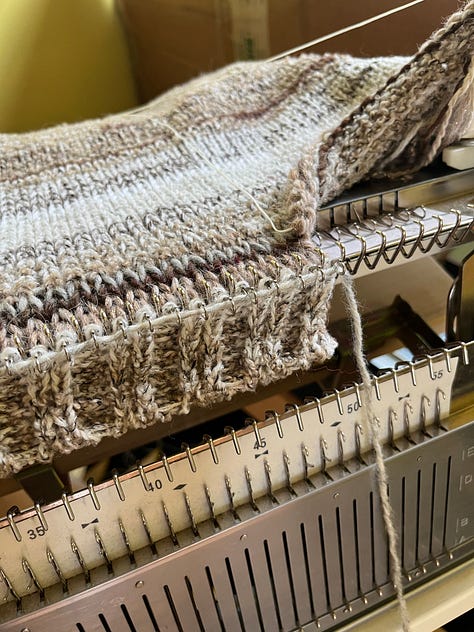
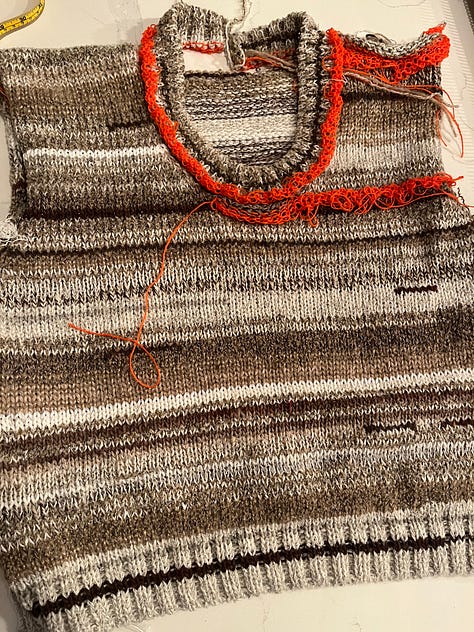
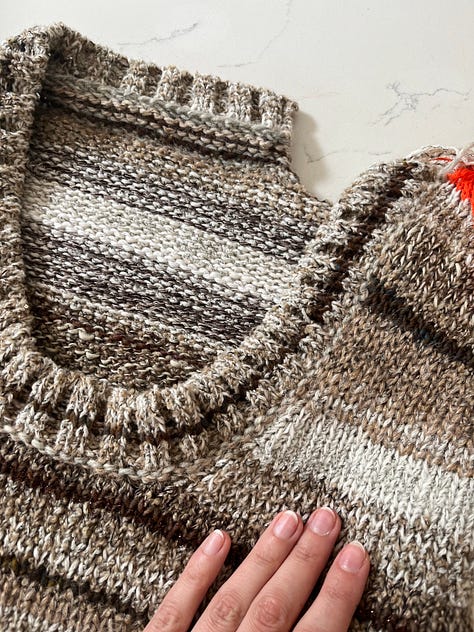
And then things went off the rails. I hung the sweater on the machine and started knitting the first sleeve, from upper shoulder down to wrist. I had an inkling at the back of my mind, this sleeve looks kind of wide… But it’s kind of hard to tell when looking at a flat piece. So I continued ahead. After doing the first sleeve I stopped for a fit check, and realized the fit was off, the sleeve was wayyyyy too wide.
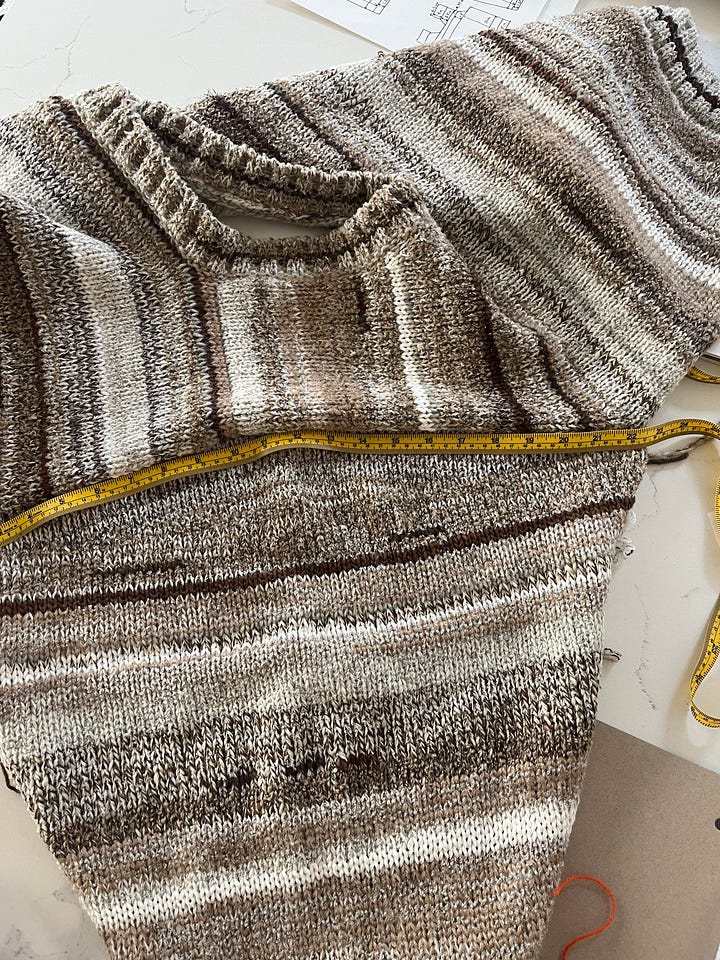
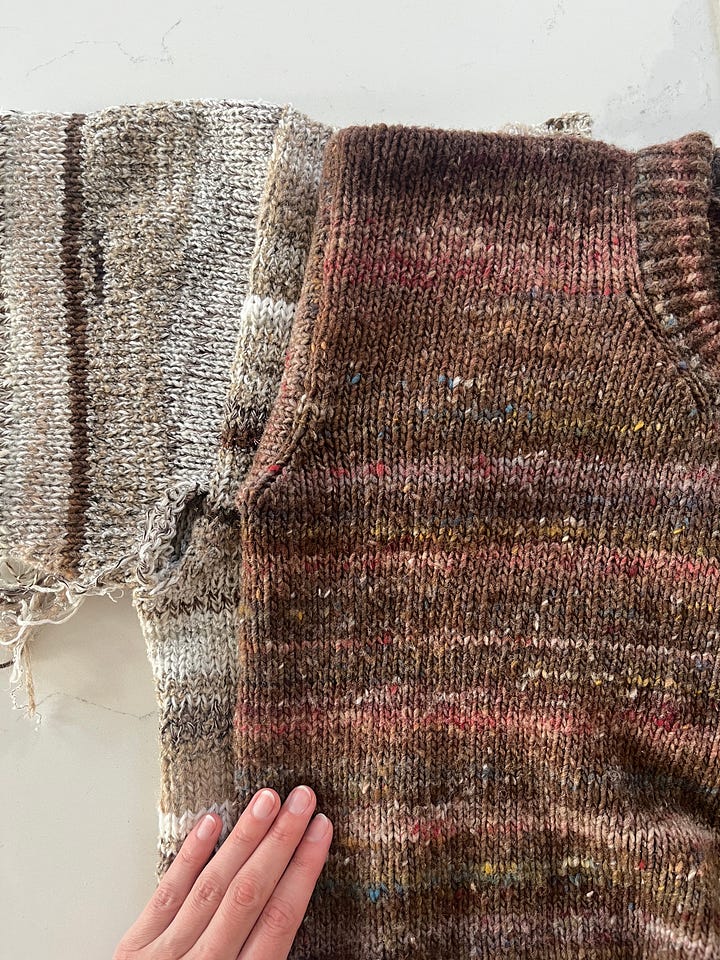
And it wasn’t just that the sleeve was too wide. The real, insurmountable problem was the armhole, which was too large (by an extra 2 inches, caused by the 2 inches of additional ‘height’ I added to the upper front and back blocks). Those of you who have tried to alter a shirt or a jacket know that it’s pretty much impossible to correct an armhole that’s too big.
I didn’t have the heart to unravel everything I’d done so far, it was too good - so I had to pivot… and turn this sweater into a vest. All things considered, I think it worked out quite well!
Next time
Since the vest, I’ve started working on a few new custom sweaters, and in the process will be developing / testing two new sweater patterns. Now I know better than to add an extra inch here or there without more serious thought about the geometry. Lesson learned (I hope)…
I’ve also continued to research pattern software, and have a lead on a good open-source / free option. Looking forward to trying it out in the coming weeks!
I think I’ll continue making vests in additions to sweaters, they are kind of perfect for the early days of fall in NYC…
And if you want the TL;DR version of this sweater transformation ‘deep dive’ I made an Instagram reel highlighting the process, in an effort to start creating more video content about this project. Though I’m guessing the people who want the TL;DR probably didn’t make it this far… 🤪 next time I’ll be sure to share it at the top.




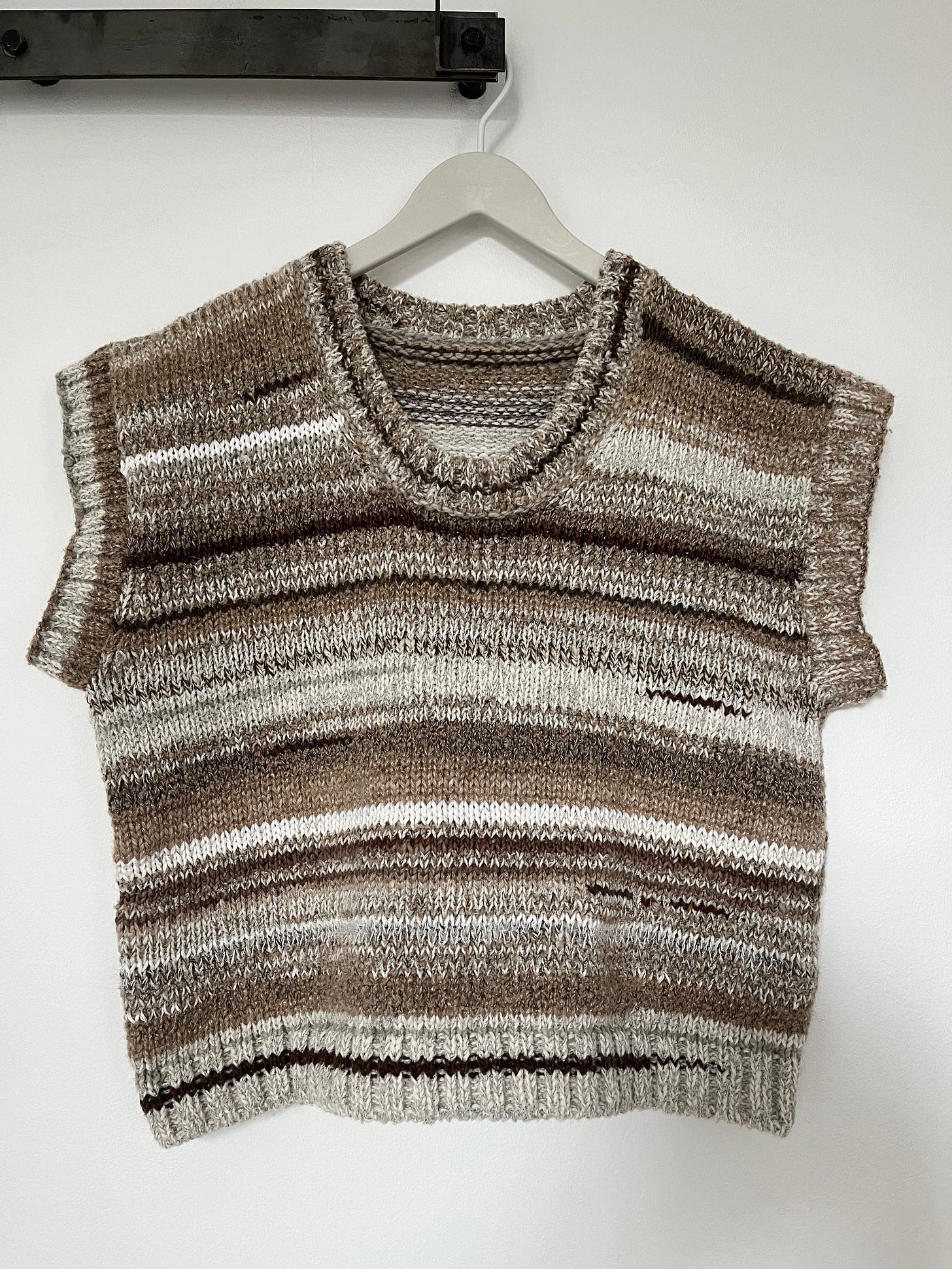
Love the red!